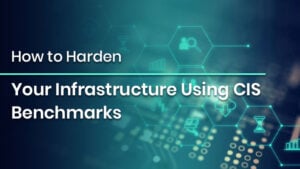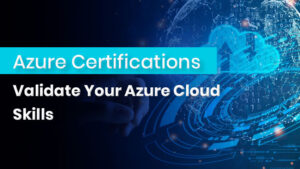
How to Harden Your Infrastructure Using CIS Benchmarks
How to Harden Your Infrastructure Using CIS Benchmarks Introduction As more organizations go faster with their digital transformation, the security and resilience of IT infrastructure
Limited-Time Offer! Get an exclusive 40% OFF on IPSpecialist Premium Monthly & Annual Plans. Use Promo Code: UPSKILLNOW at checkout.

How to Harden Your Infrastructure Using CIS Benchmarks Introduction As more organizations go faster with their digital transformation, the security and resilience of IT infrastructure

Azure Certifications – Validate Your Azure Cloud Skills Introduction Cloud computing has transformed the business landscape, providing scalability, flexibility, and affordability in a way

Top Cyber Security Trends: What Every Organization Must Know Introduction In an era marked by digital transformation, remote workforces, and rapidly evolving threat landscapes,
Table of Contents
The Terraform vs. Ansible battle continues to escalate as the DevOps environment focuses more on automation and orchestration. These two tools help in automating configurations and deploying infrastructure. Terraform offers to deploy Infrastructure as a Code, helps in readability, and lifts and shifts deployments. Ansible is a configuration management tool for automating system configuration and management. While both serve similar purposes in empowering organizations to manage and provision infrastructure efficiently, they possess distinct features, workflows, and use cases.
Dive deeper into the world of cloud technology and IT mastery with IPSpecialist! Get the best course by accessing comprehensive IT certification training and resources. From beginner-level IT courses to mastering Cloud Computing, Cybersecurity, DevOps, Microsoft, and more, IPSpecialist offers diverse courses, study guides, and practice exams tailored to amplify your skills.
Terraform is a tool designed to help provision and de-provision cloud infrastructure using an infrastructure-as-code approach. It is highly specialized for this purpose. On the other hand, Ansible is a more general tool that can be used for automation across various domains. Both Terraform and ansible have strong open-source communities and commercial products that are well supported.
Terraform sets up and manages your IT infrastructure using an infrastructure-as-code approach. Ansible, on the other hand, focuses on automating IT tasks like provisioning and deployment. In short: Use Terraform for infrastructure setup and Ansible for configuration. Both have open-source solid support and commercial options.
Terraform is an open-source tool for building, changing, and versioning infrastructure securely and effectively. It is an Infrastructure as a Code tool that is very straightforward. It helps to develop and scale Cloud services and manage the state of the network. Its primary use is in data centers and software-defined networking environments. It does not install and manage software on existing devices; instead, it creates, modifies, and destroys servers and other cloud services. Slack, Uber, Starbucks, Twitch, and all big brands use Terraform. We can also integrate Terraform with Microsoft Azure, Heroku, Google Compute Engine, etc.
Ansible is the most significant way to automate and configure apps and IT infrastructure. Ansible is an open-source configuration management tool mainly designed for provisioning and deploying applications using IaaC.
It has its language to describe system configuration. Ansible is agentless, making it manage large deployments across enterprises using Windows Power Shell or SSH to perform its tasks. Ansible is not completely declarative but a hybrid of procedural and declarative. It can integrate with Amazon EC2, Docker, and Kubernetes. Companies like Zalando, Revolt, and 9gaga are using Ansible.
Terraform specializes in orchestrating environments and maintaining consistent infrastructure states, leveraging stored domain states to restore processes in case of glitches automatically. Conversely, Ansible excels in configuring individual components and ensuring smooth functioning without errors, with hybrid orchestration and infrastructure replacement capabilities. In summary, while both tools are essential in DevOps, Terraform focuses on orchestration and state management, whereas Ansible prioritizes configuration management with orchestration capabilities.
DevOps tools are categorized into procedural and declarative approaches. Terraform and Puppet exemplify the declarative style, where the desired end state is defined, and the tool ensures the environment matches that state. Terraform specifically focuses on automatic state description and transition management. In contrast, Ansible adopts a hybrid approach, blending declarative and procedural styles. While it allows for ad-hoc procedural commands, it also supports declaring desired states, emphasizing the importance of understanding resource management for achieving desired outcomes effectively.
The workflow for application deployment involves provisioning infrastructure, installing the correct source code version, and managing dependencies. The concept of mutability in infrastructure refers to whether existing infrastructure is reused or entirely new infrastructure is created for each deployment. Mutability impacts deployment procedures, with malleable infrastructure allowing subsequent versions of apps on the same infrastructure and immutable infrastructure deploying new versions on fresh resources. While mutable setups seem convenient, they increase the risk of failure due to the need for uninstalling previous versions. In contrast, treating infrastructure as immutable minimizes steps, reduces the chance of failure, and provides better control over changes, enabling easy rollback if needed. This approach promotes consistency and predictability across server fleets.
Terraform offers comprehensive resource lifecycle management, maintaining state files to track infrastructure changes and configurations. This enables monitoring, importing existing resources, and querying infrastructure details anytime. In contrast, Ansible does not provide explicit lifecycle management. Changes to configurations are immediately applied to target resources as Ansible prioritizes configuration management and operates under the assumption of immutable infrastructure by default.
There are two main working components of terraform.
Terraform is declarative. It directly describes the end state of the system without defining the steps to reach there. It works at a high level of abstraction to describe what services and resources should be created and defined. Terraform core takes two input sources to do its job. The first input source is a terraform configuration that its users configure. Users define what needs to be provisioned and created. The second input source is a state that holds information about the infrastructure.
The second principal component is providers, such as cloud providers like AWS, GCP, Azure, or other Infrastructure as service platforms. It helps to create infrastructure on different levels. Let’s take an example where users create an AWS infrastructure, deploy Kubernetes on top of it, and then create services inside the cluster of Kubernetes. Terraform has multiple providers for various technologies; users can access resources from these providers through Terraform. This is the basic working terminology of Terraform that helps to provision and cover the complete application setup from infrastructure to fully developed application.
As we have discussed the working of Terraform, now we will look at the features of Terraform.
Ansible is agentless and doesn’t run on target nodes. It makes connections using SSH or other authentication methods. It installs various Python modules on the target using JSON. These modules are simple instructions that run on the target. These modules are executed and removed once their job is done. This strategy ensures that there is no misuse of resources on target. Python must be installed on both the controlling and the target nodes.
| Feature | Terraform | Ansible |
| Core Purpose | Infrastructure Provisioning & Management (IaC) | Configuration Management |
| Approach | Declarative (define the desired state) | Procedural (define task sequence) |
| Focus | Cloud Infrastructure (e.g., VMs, networks, storage) | Servers, Applications, Network Devices (any OS) |
| State Management | Manages its own state (Terraform State) | Relies on external configuration management tools |
| Provisioning | Primarily cloud-focused | Supports bare-metal provisioning |
| Learning Curve | Steeper due to IaC concepts | Easier to learn for beginners |
In conclusion, the comparison between Terraform and Ansible reveals distinct strengths and applications within the DevOps ecosystem. While Terraform excels in orchestrating infrastructure setups and managing consistent states through Infrastructure as Code, Ansible shines in automating system configurations and deployments across diverse environments.
Understanding the critical differences between these tools is crucial for selecting the appropriate tool based on specific project requirements and organizational needs. Ultimately, Terraform and Ansible significantly enhance automation and orchestration capabilities in the DevOps landscape, empowering teams to streamline operations and drive efficiency in IT workflows.
Ready to take your infrastructure management to the next level? Explore Terraform and Ansible today and see which one fits your needs best.
Terraform is an infrastructure as a code tool for provisioning cloud resources, while Ansible is a configuration management tool for automating system tasks.
Terraform tracks infrastructure state using state files, while Ansible handles configuration drift using idempotent tasks and does not maintain separate state files.
Yes, they can complement each other; use Terraform for provisioning and Ansible for configuration and management.
© 2025 All rights reserved | Privacy Policy | Terms and Conditions | Sitemap | Cookie Policy

